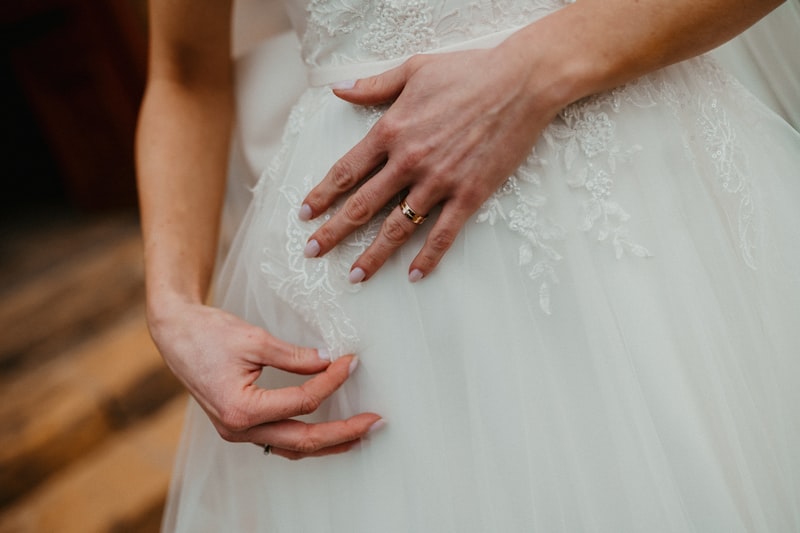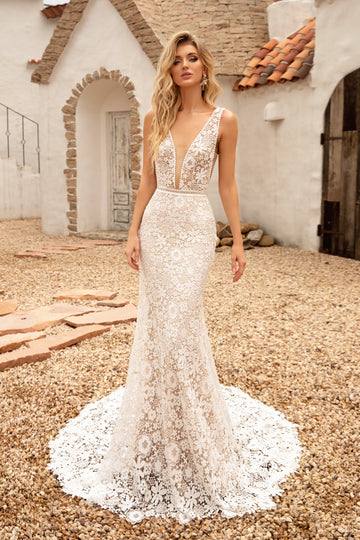Embellishments and Their Material Compatibility with Wedding Gowns: A Comprehensive Guide for Brides
Embellishments and Their Material Compatibility with Wedding Gowns: A Comprehensive Guide for Brides
Choosing the perfect wedding gown is one of the most exciting aspects of planning a wedding. However, it can also be overwhelming, especially when it comes to understanding the various embellishments and their material compatibility with wedding gowns. In this article, we will delve into the world of wedding dress embellishments, their materials, and how they can elevate your bridal look. From lace overlays to beadwork, understanding these elements will help you make informed decisions.
Understanding Wedding Gown Embellishments
Wedding gown embellishments can truly transform a simple dress into a stunning piece of art. They add character, texture, and elegance, often becoming focal points of the gown. Here are some popular types of embellishments:
- Lace: An intricate fabric often used in overlays or accents.
- Beading: Pearls, crystals, or sequins sewn onto the gown to catch the light.
- Embroidery: Decorative stitching that can be used to create patterns or scenes.
- Appliqué: The technique of layering fabric patches onto the gown.
- Fringe and Feathers: These can add a bohemian touch, giving the dress movement.
Material Compatibility with Embellishments
Different embellishments work better with specific fabrics. Here’s a breakdown of how various materials interact with different embellishments:
| Fabric | Compatible Embellishments |
| Silk | Lace overlays, beadwork, embroidery |
| Chiffon | Light beading, appliqué, lace |
| Tulle | Fringe, feathers, beadwork |
| satin | Heavy beadwork, embroidery, lace |
| Organza | Lace appliqué, light embroidery, delicate beading |
The Role of Lace in Wedding Gowns
Lace is a timeless fabric that has graced wedding gowns for generations. Its delicate nature allows it to pair well with a variety of materials. Lace can be used as an overlay, adding an ethereal quality to the gown. When combined with satin or chiffon, lace creates a stunning contrast that many brides adore. 
Beadwork: Adding Sparkle to Your Dress
For brides looking to add a bit of glamour, beadwork is an ideal choice. It’s important to consider the weight of the fabric when adding beadwork. Heavier fabrics like satin can support more intricate bead designs, while lighter fabrics such as chiffon or organza may benefit from a minimalist bead application. When choosing beadwork, think about the overall style of the dress—whether it’s vintage, modern, or bohemian—and ensure the beadwork aligns with that vision.
Embroidery: A Personal Touch
Embroidery is an excellent way to customize a wedding gown. It allows brides to incorporate personal elements such as floral designs or monograms. Many brides choose embroidery for its versatility; it can be added to almost any fabric, though it works best on sturdier materials like satin or taffeta. With embroidery, you can tell your unique love story through designs that have special meaning to you and your partner.
Appliqué for a Unique Look
Appliqué can create stunning visual interest on a gown. This technique involves sewing pieces of fabric onto the main dress, and it can be done in various colors and shapes. Appliqué works well with fabrics such as tulle and chiffon, where the layered effect can create depth. For brides who wish to add a bold design element to their wedding gown, appliqué is an excellent choice.
Fringe and Feathers: A Fashion-Forward Choice
If you’re a bride looking to make a statement, consider fringe or feather embellishments. These can impart a fun and trendy vibe to your wedding gown. Fringe works well on heavier fabrics—think satin or velvet—while feathers are best on lighter materials like tulle. They can also add movement to your dress, making for stunning photos as you walk down the aisle.
Practical Considerations When Choosing Embellishments
When selecting embellishments, it’s crucial to consider a few practical aspects:
- Comfort: Ensure the embellishments don’t cause discomfort, especially if you’ll be wearing the dress for several hours.
- Weight: Heavier embellishments may necessitate sturdier fabrics, which might limit your movement.
- Care: Some embellishments require special care. Know how to maintain your dress post-wedding to preserve its beauty.
Conclusion: Choosing the Right Embellishments for Your Wedding Gown
In conclusion, understanding the various embellishments and their material compatibility with wedding gowns is essential for creating a stunning bridal look. Lace, beadwork, embroidery, appliqué, and fringe can add significant style to your gown, provided you consider the fabric and overall aesthetic you’re aiming for. Opt for embellishments that resonate with your personal style and reflect your love story to ensure your dress is as unique as your journey together. Remember to prioritize comfort and practicality when making your selection.
Ultimately, the right embellishments will enhance your wedding gown and help you shine on your special day. Happy wedding planning!
